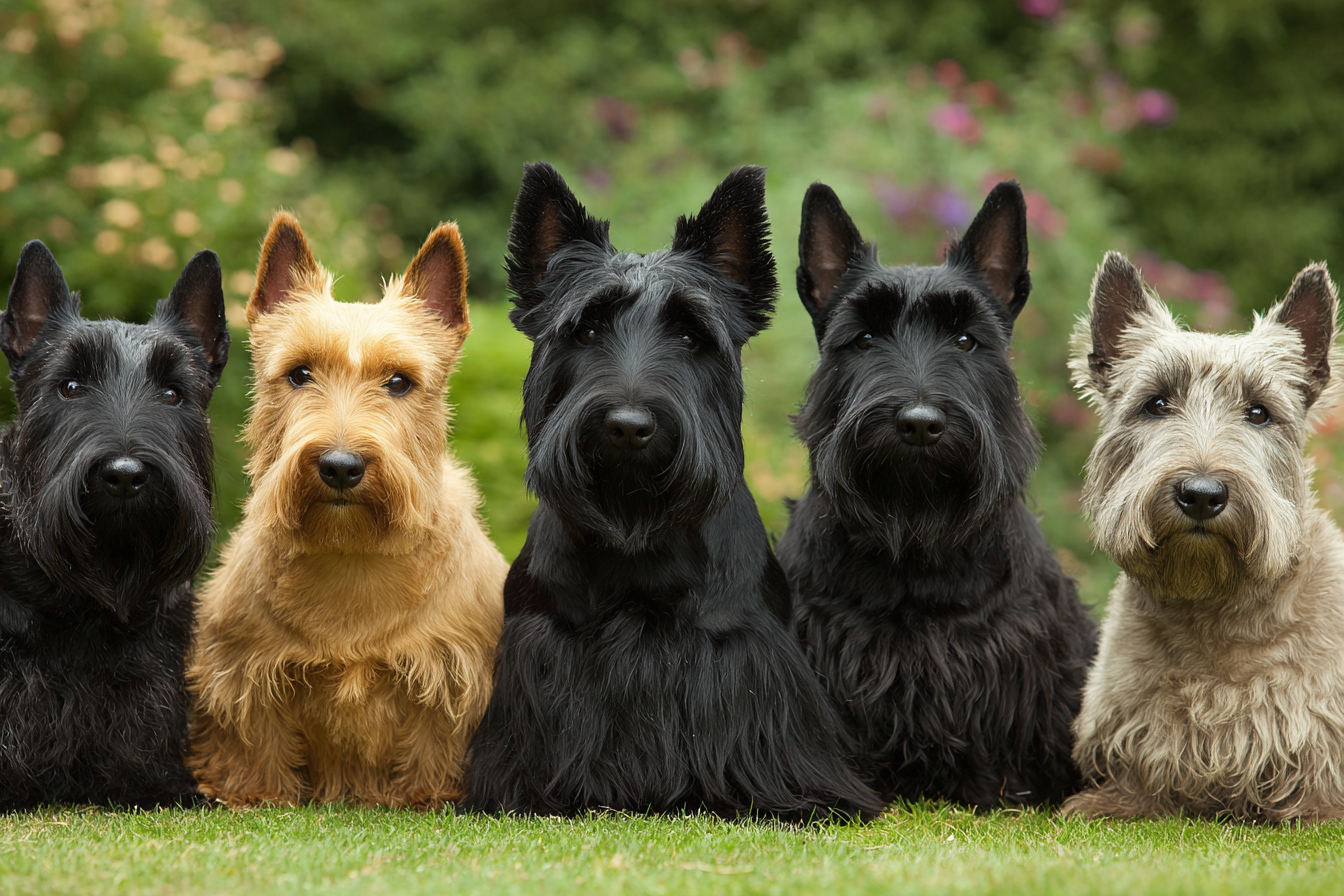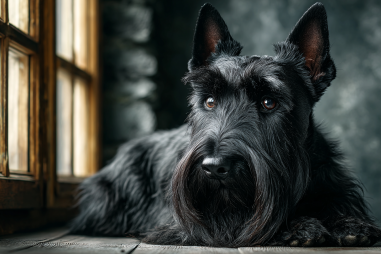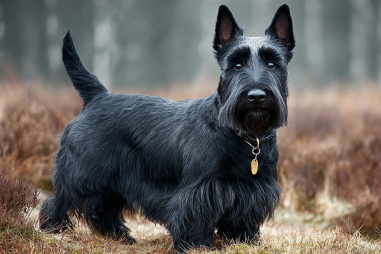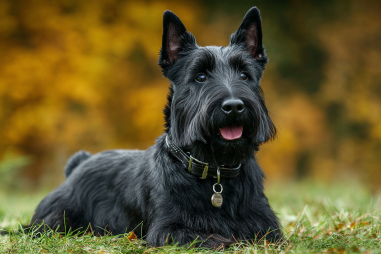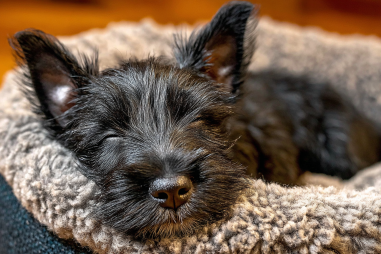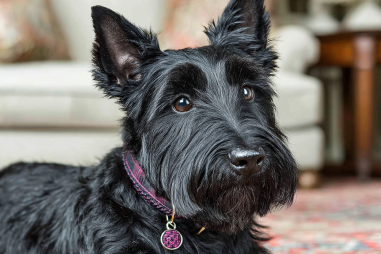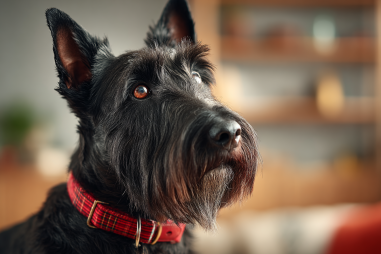The Scottish Terrier, affectionately known as the Scottie, is renowned for its unique and charming appearance. One of the defining aspects of this breed is its distinctive coat, which comes in various types and colors that play a significant role in its overall look and care requirements. Understanding the nuances of Scottish Terrier coat types and colors will not only help you appreciate their beauty but also guide you in providing the right grooming and care. Whether you’re a prospective Scottie owner or simply a dog enthusiast, this guide offers a comprehensive look into the fascinating coat diversity of this beloved breed.
Standard Coat Types and Textures
The Scottish Terrier’s coat is one of its standout features, characterized by a very distinctive texture and structure. Generally, Scotties have a double coat consisting of a wiry, hard outer coat and a soft, dense undercoat. This combination creates the coarse yet plush feel that is so typical of the breed.
The outer coat is designed to protect the dog from harsh weather. It is harsh and straight to the touch, standing away from the body, which gives the Scottie its rugged appearance. Meanwhile, the undercoat provides insulation and warmth. This layering is particularly important given the breed’s origins in Scotland’s cold, wet climate.
While all Scottish Terriers share this double coat structure, there can be subtle variations in the length and coarseness of the outer coat depending on genetics and grooming habits. Some may have a slightly softer outer coat, but breeders typically strive to maintain the classic wiry texture, as it helps protect the dog’s skin and supports the traditional breed silhouette.
Recognized Colors and Markings
Scottish Terriers come in a handful of recognized colors, each giving the breed a unique personality. According to most breed standards, the accepted coat colors are:
- Black: The most common and classic color, pure black is sleek and shiny, enhancing the breed’s dignified look.
- Wheaten: This color ranges from pale cream to a rich gold tone. Wheaten Scotties often have a warmer, softer appearance than their black counterparts.
- Brindle: A mixture of black and fawn or brown stripes, brindle Scotties display a striking striped or tiger-like pattern. The pattern can vary in intensity, and each brindle Scottie’s coat is truly unique.
Some standards also recognize variations within these main color categories, but other colors or patterns are typically considered non-standard for show purposes. Unlike some breeds, Scottish Terriers rarely exhibit large white markings, with pure coat colors being highly preferred for maintaining breed purity. Small white patches may occasionally appear but are usually minor.
Genetics Behind Coat Variations
The diversity in Scottish Terrier coat colors and textures can be traced back to their genetic makeup. Coat color is determined by several genes that influence pigment production and distribution. The primary pigments involved are eumelanin (black or brown) and pheomelanin (red or yellow).
In Scotties, the black coat color is caused by dominant genes controlling eumelanin production, resulting in a solid black coat. Wheaten coloration arises from genes that reduce eumelanin, allowing more pheomelanin pigments to show, leading to lighter colors. Brindle patterning is more complex, as it occurs when the brindle allele interacts with the base color gene, overlaying stripes of darker pigment on a lighter base.
The wiry coat texture is also genetically inherited. The harsh outer coat results from dominant genes affecting hair structure, producing dense, coarse hair shafts. These genetic traits have been selectively bred over generations to preserve the distinctive Scottie coat.
Grooming Needs Based on Coat Type
Understanding your Scottish Terrier’s coat type is essential for effective grooming and care. The wiry outer coat requires regular attention to maintain its texture and appearance, as well as to protect the dog’s health.
Grooming for a Scottie typically includes the following practices:
- Hand-stripping: This is the preferred method for show dogs and involves pulling out old, dead hairs by hand to encourage new growth and preserve the wiry coat’s texture. It’s a skilled technique best performed by professionals or experienced owners.
- Clipping: Many pet owners opt for clipping, which is easier but can soften the coat over time, causing a less traditional Scottie look. Clipping chops the hair close to the skin and is often done every 6 to 8 weeks.
- Regular brushing: Since the Scottie’s coat can trap dirt and debris, brushing at least a couple of times a week helps prevent matting and tangles, especially in the softer undercoat.
- Bathing: Scotties do not require frequent bathing — typically once every few months or as needed — to avoid stripping natural oils and drying out the skin.
Wheaten or brindle coats don’t differ drastically in grooming compared to black coats, but they can sometimes show dirt or lose vibrancy if not regularly brushed. Adjusting grooming frequency and techniques based on your Scottie’s lifestyle and coat type will keep them looking their best.
Impact of Coat on Health and Care
The Scottish Terrier’s coat plays a crucial role in their health and comfort. Its dense undercoat and tough outer coat provide insulation against cold weather and help repel moisture, making the breed well-suited to outdoor activities in cooler climates.
However, the thick coat can also predispose Scotties to some challenges:
- Skin infections: If the coat becomes matted or dirty, it can trap moisture and bacteria close to the skin, leading to irritation or infections.
- Parasites: Fleas and ticks may hide under the dense fur, so regular checks and preventive treatments are important.
- Overheating: Though built for cooler weather, Scotties can overheat in hot environments due to their thick coat, so monitoring and providing adequate shade and water is vital.
Maintaining a healthy coat through proper grooming directly prevents many of these issues and contributes to your dog’s overall well-being.
Choosing a Scottish Terrier Based on Coat
If you’re considering welcoming a Scottish Terrier into your home, their coat type and color might influence your choice. While the personality and health of the dog are paramount, the coat’s conditions and grooming needs also factor into day-to-day ownership.
Think about the following when choosing a Scottie based on coat:
- Activity level and lifestyle: If you lead an active outdoor life, a Scottie with a hardy, wiry coat will benefit from its protective features. Grooming commitments also increase with wirier coats, so be prepared for that.
- Appearance preferences: Some people prefer the classic black Scottie for its iconic look, while others may be drawn to the warmer wheaten or patterned brindle coats for their individuality.
- Grooming ability: If you prefer low-maintenance grooming, a clipped coat might be better, but keep in mind this changes the feel and look of the coat.
Meeting different Scotties and discussing coat types with breeders or rescue groups can provide hands-on insights to help you make the best choice for your home and lifestyle.
Appreciating the Diversity of Scottish Terrier Coats
The Scottish Terrier’s coat is more than just a layer of fur; it is a defining characteristic that embodies the breed’s history, function, and unique charm. From the sharp black coats to the rich and warm wheaten, and the striking brindle patterns, each Scottie showcases a beautiful variety of coat colors and textures.
Proper understanding and care for these coats ensure not only the dog’s health and comfort but also their iconic appearance that has captivated dog lovers for generations. Whether you’re grooming your own Scottie or simply admiring this remarkable breed, appreciating the diversity of their coats connects us deeper with their true Scottish spirit.

